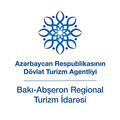的点评
Visit Baku's Carpet Museum
Azerbaijan National Carpet Museum的点评
点评:The Carpet Museum, situated on the Seaside Boulevard, is one of Baku’s modern architectural icons. Shaped like a rolled-up carpet, the eye-catching building was designed by Austrian architect Franz Janz and opened in 2014.
The museum itself dates back to 1967, when it was established to research and exhibit Azerbaijan’s ancient art of carpet weaving, which in 2010 was inscribed on UNESCO’s Representative List of the Intangible Cultural Heritage of Humanity. In some rural regions of the country, carpet weaving is still a family tradition passed on orally through the generations.
Today, the Carpet Museum is home to the largest collection of Azerbaijani carpets in the world – over 6,000. Those on display mainly date from between the 17th and 20th centuries and are arranged according to style and region. As you browse them, you’ll be able to uncover the ins and outs of Azerbaijan’s 7 regional carpet weaving schools and learn the meaning behind the multitude of designs, which reflect local culture, nature and beliefs.
In addition, the museum displays lots more carpet products and handicrafts. Overall, there are 7 sections to explore covering: pile carpets; flat-woven carpets; carpet products; artistic metalwork; ceramics, glass, wood and paper; textiles, costume and embroidery; and jewellery. You can also see how Azerbaijani carpets are made during live demonstrations, learn about the legendary Azerbaijani carpet designer Latif Karimov, and purchase souvenirs in the gift shop.
The museum itself dates back to 1967, when it was established to research and exhibit Azerbaijan’s ancient art of carpet weaving, which in 2010 was inscribed on UNESCO’s Representative List of the Intangible Cultural Heritage of Humanity. In some rural regions of the country, carpet weaving is still a family tradition passed on orally through the generations.
Today, the Carpet Museum is home to the largest collection of Azerbaijani carpets in the world – over 6,000. Those on display mainly date from between the 17th and 20th centuries and are arranged according to style and region. As you browse them, you’ll be able to uncover the ins and outs of Azerbaijan’s 7 regional carpet weaving schools and learn the meaning behind the multitude of designs, which reflect local culture, nature and beliefs.
In addition, the museum displays lots more carpet products and handicrafts. Overall, there are 7 sections to explore covering: pile carpets; flat-woven carpets; carpet products; artistic metalwork; ceramics, glass, wood and paper; textiles, costume and embroidery; and jewellery. You can also see how Azerbaijani carpets are made during live demonstrations, learn about the legendary Azerbaijani carpet designer Latif Karimov, and purchase souvenirs in the gift shop.
翻译:地毯博物馆位于海滨大道,是巴库的现代建筑标志之一。这座引人注目的建筑外形像一块卷起的地毯,由奥地利建筑师 Franz Janz 设计,于 2014 年开放。
博物馆本身的历史可以追溯到 1967 年,当时它是为了研究和展示阿塞拜疆古老的地毯编织艺术而建立的,2010 年,该艺术被列入联合国教科文组织人类非物质文化遗产代表名录。在该国的一些农村地区,地毯编织仍然是一个口口相传的家庭传统。
如今,地毯博物馆是世界上最大的阿塞拜疆地毯收藏地——超过 6,000 块。展出的地毯主要来自 17 世纪至 20 世纪,并按风格和地区排列。浏览这些展览,您将能够了解阿塞拜疆 7 所地区地毯编织学校的来龙去脉,并了解众多设计背后的含义,这些设计反映了当地的文化、自然和信仰。
此外,博物馆还展示了更多地毯产品和手工艺品。总共有 7 个部分可供探索:绒头地毯;平织地毯;地毯产品;艺术金属制品;陶瓷、玻璃、木材和纸张;纺织品、服装和刺绣;珠宝。您还可以在现场演示中了解阿塞拜疆地毯的制作过程,了解传奇的阿塞拜疆地毯设计师 Latif Karimov,并在礼品店购买纪念品。
博物馆本身的历史可以追溯到 1967 年,当时它是为了研究和展示阿塞拜疆古老的地毯编织艺术而建立的,2010 年,该艺术被列入联合国教科文组织人类非物质文化遗产代表名录。在该国的一些农村地区,地毯编织仍然是一个口口相传的家庭传统。
如今,地毯博物馆是世界上最大的阿塞拜疆地毯收藏地——超过 6,000 块。展出的地毯主要来自 17 世纪至 20 世纪,并按风格和地区排列。浏览这些展览,您将能够了解阿塞拜疆 7 所地区地毯编织学校的来龙去脉,并了解众多设计背后的含义,这些设计反映了当地的文化、自然和信仰。
此外,博物馆还展示了更多地毯产品和手工艺品。总共有 7 个部分可供探索:绒头地毯;平织地毯;地毯产品;艺术金属制品;陶瓷、玻璃、木材和纸张;纺织品、服装和刺绣;珠宝。您还可以在现场演示中了解阿塞拜疆地毯的制作过程,了解传奇的阿塞拜疆地毯设计师 Latif Karimov,并在礼品店购买纪念品。



此点评仅代表旅行者个人的主观意见,并不代表TripAdvisor以及其合作方的意见。
关于我们
|新闻动态
|商务合作
|会员中心
|业主中心
|常见问题
|意见反馈
|联系我们
|营业执照
© 2025 Tripadvisor 版权所有。
使用条款 |隐私政策 |网站工作原理
部分照片由 VFM Leonardo 提供。
* Tripadvisor不是旅行社,也不是旅游预订服务代理商。我们提供免费、客观、公正的旅游资讯服务。 (显示更多)
TripAdvisor LLC 既不是预订代理商,也不是旅游运营商,不会向网站用户收取任何服务费。 按照规定,在 Tripadvisor 发布机票价格、游览和旅行套餐的合作伙伴(航空公司、旅行提供商及预订代理商),其标价须包含所有费用和附加费用。 例如, 机场出入境税费、消费税与其他服务费、手续费、杂费及附加费用。 当您向我们的某个合作伙伴进行预订时,请务必查阅他们的网站以了解当地行政部门要求的所有适用费用的具体情况。 除非另有说明,机票价格通常指的是一个人的价格(以人民币计)。
为方便起见,TripAdvisor LLC 根据从我们的预订合作伙伴获取的空房率计算每个酒店的均价。 对于游览和景点来说,所显示价格通常是每位成人的最低可用价格。 对于列出的任何旅行套餐或优惠,TripAdvisor LLC 无法保证任何特定的费率或价格。 此外,酒店均价每晚会更新,并以您的首选币种表示(使用现行汇率)。 由于这些已换算的价格是预估价格,因此,有关具体金额和币种请与预订网站进行核实。
此外,TripAdvisor LLC 无法保证我们网站上宣传的价格随时有效。 标价可能需要预订一定天数才能生效,或有不可用日期、使用条件或限制。
TripAdvisor公司对外部网站的内容一概不负责。优惠价格中不含税和其他费用。
ICP证:沪B2-20200433
沪ICP备20013175号
 沪公网安备31010502005427号
沪公网安备31010502005427号鹰程信息技术(上海)有限公司
货币/国家及地区
¥CNY
中国

